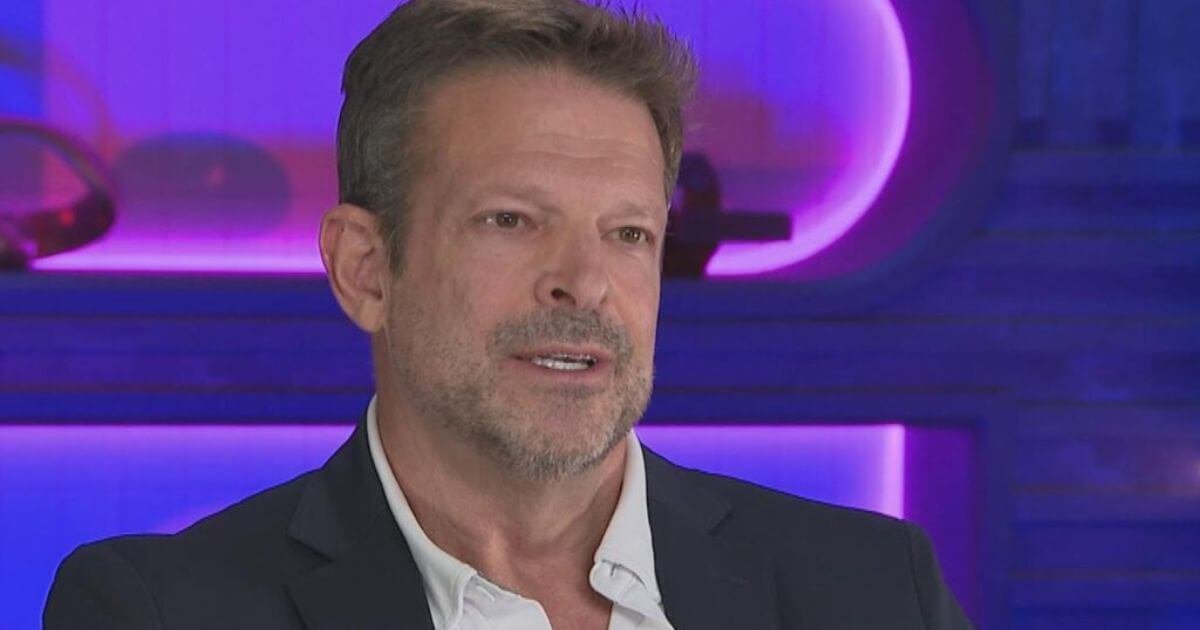Petrol prices in Pakistan have become a defining factor for every household’s monthly budget. The PKR 264.61 per litre rate for petrol directly impacts motorcycles, private vehicles, and even rickshaws that millions rely on daily. Every price increase sends ripples through middle-income households and lower-income households alike, forcing families to reconsider their transportation choices. The Finance Division’s latest updates through press releases reveal that diesel now sits at Rs272.77 per litre, affecting not just personal cars but entire supply chains. When High-speed diesel for commercial vehicles, trucks, and buses climbs to PKR 285.83, the cost increase doesn’t stop at fuel pumps.
Consumer spending shrinks as drivers’ budgets tighten, while business costs for companies producing goods escalate beyond consumers’ tolerance. The Oil and Gas Regulatory Authority (OGRA) announces fuel prices twice a month on the 15th day and last day of each month, giving just 15 days before new prices emerge. These adjustments reflect international crude oil prices, exchange rates between US dollars and local currency, plus taxes and levies totaling Rs79.50 per litre for standard grades. The Pakistani government balances subsidies against revenue needs while crude oil cost fluctuations from OPEC member decisions create unavoidable economic conditions. Understanding how petrol rates intertwine with inflation, trade balance, and currency exchange rates becomes essential for navigating Pakistan’s economic condition.(read more)
Current Petrol Prices in Pakistan
| Product | Price (PKR) | Adjustment | Notes |
| Petrol (Regular Grade) | Rs. 155.81/litre | + Rs. 4.07/litre | Price revision announced Tuesday |
| Petrol (Premium Grade) | Rs. 276.81/litre | — | Current market rate |
| High-Speed Diesel (HSD) | — | + Rs. 4.04/litre | Adjustment reflecting price increase |
| Historical Peak Petrol Price | Rs. 331.38/litre | — | Highest in history on Sept 16, 2023 |
| Kerosene Oil | Rs. 171.65/litre | — | Used in petroleum industries, small machines & equipment |
| Liquefied Petroleum Gas (LPG) | Rs. 254.86/kg | – Rs. 6.70/kg | Ogra October decrease (from Sept Rs. 260.56/kg) |
| LPG Cylinder (11.8 kg) | Rs. 2,527.47 | – Rs. 79.14 (3.13% drop) | Down from Rs. 2,606.61 in September |
Petroleum products witness frequent adjustments as the federal government announces revisions every fortnight through specialized refineries. On Tuesday, petrol saw a Rs4.07 per litre adjustment while high-speed diesel (HSD) experienced Rs4.04 per litre modification, reflecting price increase patterns. These petroleum products undergo refinement processes transforming crude oil—a naturally existing liquid beneath Earth’s surface formed from organic matter over an extended period—into usable fossil fuel variants meeting high demand globally.
Current pricing shows Rs.155.81 for certain grades, contrasting with Rs276.81 per litre for premium variants at Petrol Pumps. The highest petrol price in Pakistan’s history touched Rs 331.38 per liter on September 16, 2023, surpassing the 230 mark significantly. Meanwhile, kerosene oil used in petroleum industries for small machines and equipment costs PKR 171.65, and liquid petroleum stands at RS 254.86 per kg as of December 1, 2023. Ogra announced Tuesday that liquefied petroleum gas (LPG) decreased Rs.6.70 per kilogramme in October, showing a reduction where an 11.8kg cylinder reached Rs2,527.47 from September’s Rs2,448.33—a Rs.79.14 or 3.13 per cent price decrease.
Types of Petroleum in Pakistan
- CNG: For personal/medium vehicles.
- LSD: For heavy vehicles (7500 RPM).
- Super/Hi-Octane: High performance products.
- Hi-Octane Prices: One of world’s highest.
Compressed Natural gas serves medium-sized vehicles and personalized used vehicles, while Light speed diesel powers engines reaching 7500 RPMs in heavy-duty cars. CNG revolutionized fuel types nationwide during the early 2000s.
Super premium grade and high octane petrol deliver performance benefits through superior quality formulations. Hi-Octane petrol prices show price variation compared to regular grades, commanding the highest petrol prices globally in some markets.
Diesel Prices
- Diesel fuels heavy transport, agriculture, and railways.
- HSD critical to rural economies and agricultural machinery.
- Price increases increase inflation, food production, and family expenses.
- Transport costs rise for business and distribution.
- Ultimate price incorporates both importing/production locally + distance of transport.
Diesel powers heavy transport and agricultural machinery across Pakistan, making HSD critical for rural economies. Trains depend on this fuel, connecting distant regions efficiently. When diesel rates climb, the inflationary pressure ripples through essential goods markets. Farmers face higher costs for irrigation pumps and harvesters directly.
The cost of food production escalates as diesel becomes expensive, affecting household budgets nationwide. Transportation networks struggle with elevated fuel costs, impacting business costs across sectors. Distribution cost varies based on distance from the refining company to retail source. Imported and locally produced diesel both reflect transportation cost calculations in final pricing.
Euro Fuel Emission Standards in Pakistan
- International factors determine petroleum quality standards.
- Import regulations require sophisticated refining & extraction.
- OPEC pressure on emission regulation.
- Elevated costs inhibit environmental compliance.
- Refinery upgrades required to reduce pollution.
- LPG prices linked to emission standards.
- Saudi Aramco-CP & USD rate influence imports.
- Investments in emissions decreased 3.78% during last month.
- USD pressure increased 0.23%, slowing timelines.
- European norms may redefine Pakistan’s fuel industry.
Global factors increasingly shape petroleum product quality specifications across developing nations. Import regulations now mandate advancements in oil extraction and refining technologies to meet international benchmarks. Pakistan’s fuel sector faces pressure from the Organization of Petroleum Exporting Countries regarding emission controls. Costs reduction remains challenging when implementing stringent environmental protocols. Complete control over fuel quality requires substantial infrastructure investment. Reserving older refinement methods contradicts modern environmental commitments. The supply chain must adapt to cleaner fuel production standards urgently.
Recommendations from relevant ministries emphasize upgrading existing petroleum facilities to reduce vehicular pollution significantly. According to a statement published on Dawn.com, emission standards directly influence LPG producer price structures. Saudi Aramco-CP benchmarks affect US dollar exchange rate considerations for importing compliant fuels. The previous month data showed emissions-related investments decreased by 3.78pc in certain sectors. Meanwhile, average dollar exchange rate pressures increased by 0.23pc, affecting implementation timelines. European emission norms adoption could transform Pakistan’s automotive fuel landscape fundamentally.
Historical Background Of Petrol Rate
- Crude oil finds determined Pakistan’s energy sector in the beginning.
- International markets controlled local prices since independence.
- Subsidies on fuel shielded people initially.
- OGRA instituted to manage pricing & distribution.
- Refineries within the country began, but imports remained crucial.
- 1970s oil crisis triggered steep price fluctuations.
- Price adjustments correlated with crude rates & exchange movements.
- Taxes increased as subsidies diminished.
- OMCs networked out, enhancing countrywide availability.
Pakistan’s petroleum journey began when crude oil discoveries transformed the nation’s energy landscape in early decades. International market fluctuations have always dictated local pricing mechanisms since independence. The government initially subsidized fuel to protect citizens from global price volatility. OGRA was established to regulate pricing and ensure transparent petroleum product distribution across provinces. Oil refineries started domestic production but Pakistan remained dependent on imports for meeting growing demand.
Historical records show petrol rates experienced minimal changes until 1970s when global oil crisis shocked economies worldwide. The Ministry of Energy introduced periodic price adjustments linked to international crude prices and exchange rate movements against major currencies. Taxes gradually became significant revenue sources while subsidies were reduced systematically. Oil Marketing Companies expanded their networks ensuring fuel availability even in remote areas despite transportation challenges and infrastructure limitations.
Reasons Behind Petrol Price Increase

- Global markets for crude set local fuel prices.
- Geopolitics and competition increase import costs.
- Taxes and subsidies influence pump prices.
- Currency movements add to import bills.
- Refinery, distribution & commissions charge extra.
- High petrol prices increase business & manufacturing costs.
- Seasonal demand + unpredictable policies drive prices up.
- Storage limits avoid over-stocking when global prices fall.
Global crude oil markets dictate local fuel costs through geopolitical factors that create supply shocks. Countries competing for limited oil prices resources drive up acquisition expenses for importing nations. Government policies regarding taxation and subsidies directly amplify petroleum product costs at pumps nationwide. International currency fluctuations worsen import bill burdens when dollars strengthen against rupee valuations unexpectedly.
Refinery margins, distribution networks, and dealer commissions add layers multiplying cost of transportation expenses beyond crude. Business Costs escalate when fuels become expensive, triggering chain reactions through manufacturing sectors. The peak pricing periods often coincide with seasonal demand surges and government unstable phases affecting policy consistency. Storage limitations and infrastructure constraints prevent stockpiling during cheaper interim constitution periods when international rates drop temporarily.
Can Petrol Prices Be Controlled
- Government controls prices through taxes/duties/subsidies (CNG, EVs prove it)
- Rs16-17/litre markup has adjustable parts (CSL, refining, GST, customs)
- Emission standards outdated: Stuck on Euro II/III since 2012
- Past successes: Zardari’s CNG, Nawaz’s price stability show capability
- Solution: Electrify transport, subsidize efficient vehicles, diversify fuels
- Reality: High prices are policy choices, not inevitable
Compressed Natural gas adoption alongside hybrid cars demonstrates governmental capacity for fuel market intervention. Electric cars promotion through tax incentives proves prices manipulation remains possible within existing frameworks. Higher petrol prices don’t emerge spontaneously; they reflect deliberate policy choices regarding customs duties and GST application. The Rs16-17 per litre markup includes controllable components like CSL and Refining Cost elements. Currency depreciation accelerates when authorities ignore supply and demand fundamentals. Energy Efficient Cars subsidies could offset hike impacts on household purchasing power. Public transport electrification reduces fuel imports dependency while improving consumer demand stability.
Countries implementing Euro V standards since 2020 prove emission control complements pricing strategies effectively. Pakistan’s delayed adoption from Euro II Emission Standards in 2012 through outdated Euro III reveals regulatory negligence. Euro IV implementation alongside Euro VI Emission Standards from 2014 would’ve enhanced engine performance across vehicles. The future generations inherit consequences of postponing Euro VII standards beyond 2025. Super grade availability with Light-speed diesel diversification creates petroleum types competition. CNG infrastructure expansion during Zardari regime kept prices low through strategic evolution. Nawaz Sharif regime maintained prices constant briefly before external pressures emerged. 1990 baseline comparisons show country’s capacity for long-term future planning.
How Do Petrol Prices Affect The Economy
- High-octane product demand increases when transport costs become unaffordable
- Rs2.50/litre fuel hikes severely impact manufacturing operations
- Small businesses fail without fuel diversification strategies
- Agriculture suffers from petroleum-dependent irrigation costs
- Export competitiveness drops due to high shipping expenses
- Environmental initiatives delayed as industries focus on survival
High-octane products demand rises when transportation costs escalate beyond affordable thresholds. Manufacturing sectors struggle as Rs2.50 per litre increments compound operational expenses drastically. Small businesses collapse when fuel types diversification fails to offset rising expenditures. Agricultural output declines because irrigation systems consume excessive petroleum derivatives. Export competitiveness weakens when shipping charges absorb profit margins entirely. Greener environment initiatives stall as industries prioritize survival over sustainability investments during crisis periods.
Current prices at Rs268.68 per litre trigger inflation cascades affecting everyday household budgets significantly. Wage stagnation becomes critical when commuting expenses devour disposable income rapidly. Real estate markets contract as buyers hesitate making long-term commitments amid uncertainty. Service industries face closures when customers reduce discretionary spending patterns dramatically. Financial institutions tighten lending criteria observing default rates climbing steadily. Employment opportunities shrink as companies implement cost-cutting measures eliminating positions ruthlessly. Currency devaluation accelerates when import bills balloon creating dangerous fiscal imbalances nationwide since 2009.
Regulatory Authority
- OGRA reviews petroleum prices fortnightly based on global crude benchmarks
- Prices factor in import costs, exchange rates, and distribution margins
- Petroleum Division coordinates with OGRA on price adjustments
- Regulatory framework balances consumer protection and industry needs
- Transparent pricing formulas monitored across supply chain
- Regular government-mandated reviews protect all stakeholders
The OGRA framework establishes petroleum pricing mechanisms through fortnightly assessments of international crude oil benchmarks. Government oversight ensures price calculations incorporate import costs, exchange rate fluctuations, and distribution margins. This regulatory structure balances consumer protection with industry sustainability across Pakistan’s fuel sector.
Petroleum Division coordinates with OGRA to implement price adjustments based on global market dynamics. The authority monitors supply chain operations, ensuring transparent pricing formulas reach end users. Government policies mandate regular reviews, protecting both consumers and stakeholders within Pakistan’s evolving energy landscape.
Frequently Asked Questions (FAQs)
1. What is the current petrol price in Pakistan today?
The latest petrol prices in Pakistan are as follows: Rs.155.81 for some grades and Rs.276.81 per litre for premium grades (as of the last update).
2. What was the highest petrol price ever recorded in Pakistan?
The all-time record-high petrol price in Pakistani history was Rs.331.38 per litre on September 16, 2023.
3. Why do petrol prices in Pakistan change so frequently?
Petrol prices change based on global crude oil prices, exchange rates, government taxations, and fortnightly changes by Ogra.
4. How do petrol prices in Pakistan compare to other fuels like kerosene and LPG?
- Kerosene Oil: Rs.171.65 per litre
- Liquid Petroleum: Rs.254.86 per kg
- LPG: Rs.171.65 per kg (with recent price reductions)
5. Who regulates petrol prices in Pakistan?
The Oil and Gas Regulatory Authority (OGRA) fixes petrol prices, typically every 15 days, on the basis of international trends and government policy.
- Read More Blogs Here:
- Nick Hillary Net Worth $1 Million: A Powerful Story of Resilience
- Brandon Steven Net Worth $30M: A Powerful Success Story
- Italy’s Ports Blocked as Gaza Protests Sweep Nation
Conclusion
Pakistan’s external debt pressures continue shaping fuel pricing dynamics, creating ripple effects across consumer spending patterns. The long run economic stability depends on managing inflation through strategic policy adjustments. Rising fuel costs directly impact availability and pricing of essential products nationwide. Trade imbalances worsen as import bills surge, affecting the overall Impact On Trade Balance significantly.
Dua Mahfooz is an experienced journalist and financial analyst for Pakistan Coverage, specializing in celebrity net worth analysis, entertainment industry trends, and breaking news. With expertise in wealth assessment and market research, she provides accurate financial insights on public figures alongside comprehensive coverage of political, economic, and social developments. Her commitment to thorough research and fact-checking ensures reliable, well-sourced content across diverse topics.




